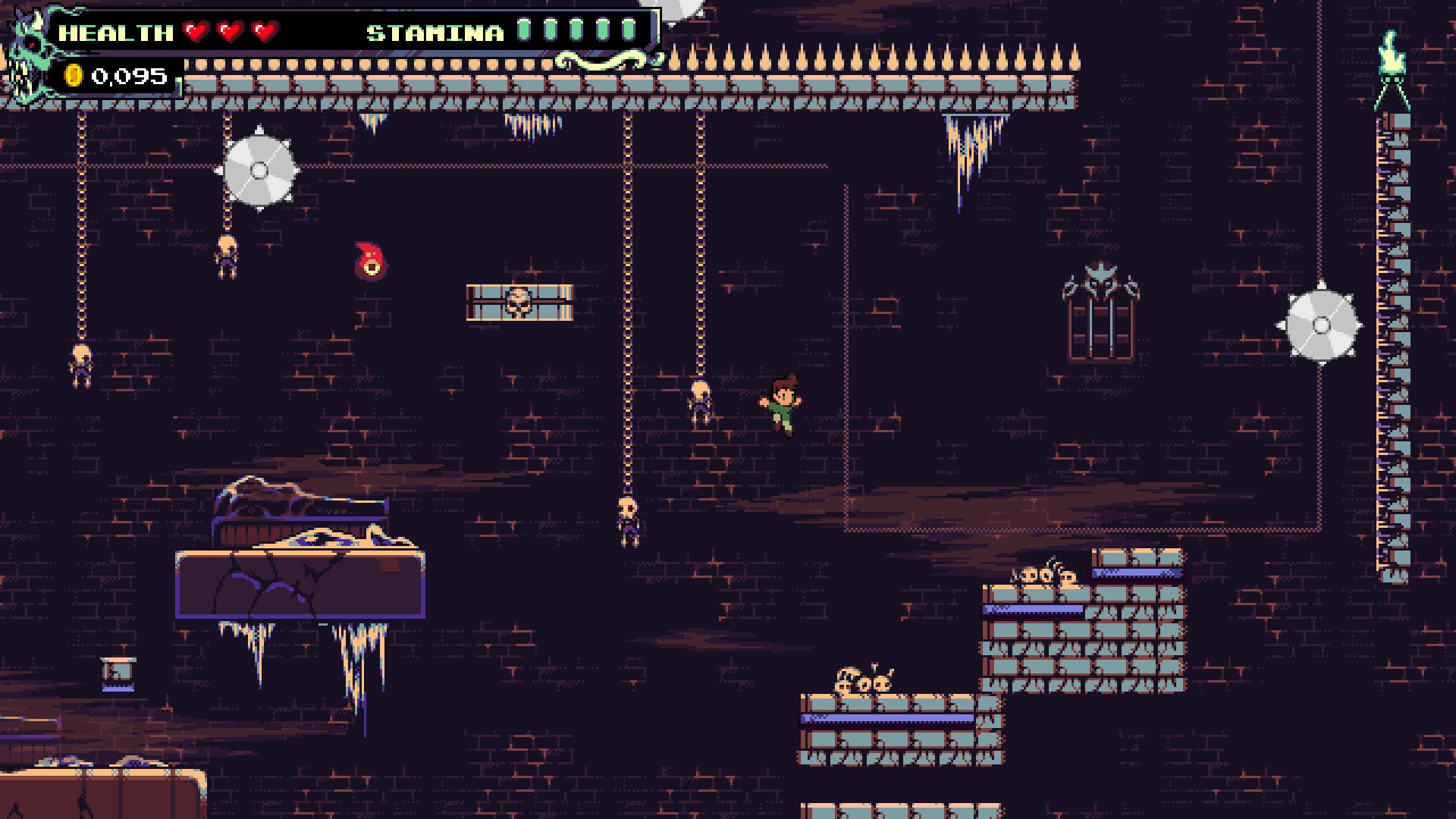Timothy and the Tower of Mu is a Tall Order
A dash of intense difficulty

Timothy and the Tower of Mu is the second game in the series from the developer, Kibou Entertainment. The first game was more of a top-down puzzle stealth game, with this one all about hardcore platforming. The game presents an interesting dichotomy featuring solid platforming... and frustrating pacing.
Going Up
Our story finds Timothy who, after saving his grandfather from a mysterious disease in the first game, now finds him dead due to a curse from the cure. To bring him back to life, he must now climb the tower of the Star God to earn one wish from the mysterious being. Standing in his way is a tower full of traps, platforming, bad guys, and a lot of obstacles.
The general gameplay is all about platforming: you have a standard jump, a slingshot projectile, and the ability to dash either on the ground or in the air. While there are two powerups you can find in the game, none of them add any new tech to the moment-to-moment gameplay. Progression is about clearing each of the game's major dungeons, which requires you to find a key in the general area to get in. Kill the boss, and you move on to the next section of the game with even more traps and enemies to fight.
Source: Author.
Make no mistake about this game, this is very difficult and advanced platforming you're going to be doing. Spikes and buzz saw traps are instant death, and most enemies respawn off camera. The only things that will aid you are healing items from the various stores, finding healing fountains, and the precious checkpoints that are the only way to save your progress.
Despite the limited move set, the game does a great job of introducing new environmental hazards and challenges for you to overcome. From beginning to end, the game doesn't repeat the same exact traps and will force you to adapt to the incoming obstacles. However, the difficulty can be the least of your problems when it comes to the pacing and UX design.
Falling Down
Timothy and the Tower of Mu boasts solid platforming that is unfortunately marred by some questionable decisions in terms of its structure and play. There are multiple times in the game where it will require you to repeat sections by going back through them the reverse way. In one spot, you need to repeat the entire area three times to find an item, deliver it back to the person, and then go back up again. There is an entire cooking minigame where you can create dishes based on the random drops from enemies, and it's optional...until it's required in one spot without any warning in order to make progress.
As the game goes on, the distance between checkpoints becomes longer which adds to the frustration when you die. There are many rooms in this game that are made up of 2 or more self-contained dangerous sections. Die near the end of the room and you're going to have to repeat everything over again. This game has a ton of death traps that can send you back to a checkpoint faster than you can say "jump." Near the end of the game, expect to go through several massive rooms before you can get even just one checkpoint.

The boss designs lean more towards puzzles, which can also mean it can be difficult to figure out if you're actually hurting a few of them. My biggest tip is to always stock up on food items as a means of damage boosting or just tanking through some of the sections. Without any mapping system, it can be hard to remember where certain shops were or where you must go if you are returning to the game after an extended absence.
Because It's There
Timothy and the Tower of Mu is not a game made for everyone. If you enjoy challenging platformers, this game features its own take on difficult sections somewhere as a less technical, more obstacle-focused take on the gameplay of Celeste. I do hope that for the next game, there is as much care done to the pacing as there is to the platforming.
This game was reviewed with a press key provided by the developer
